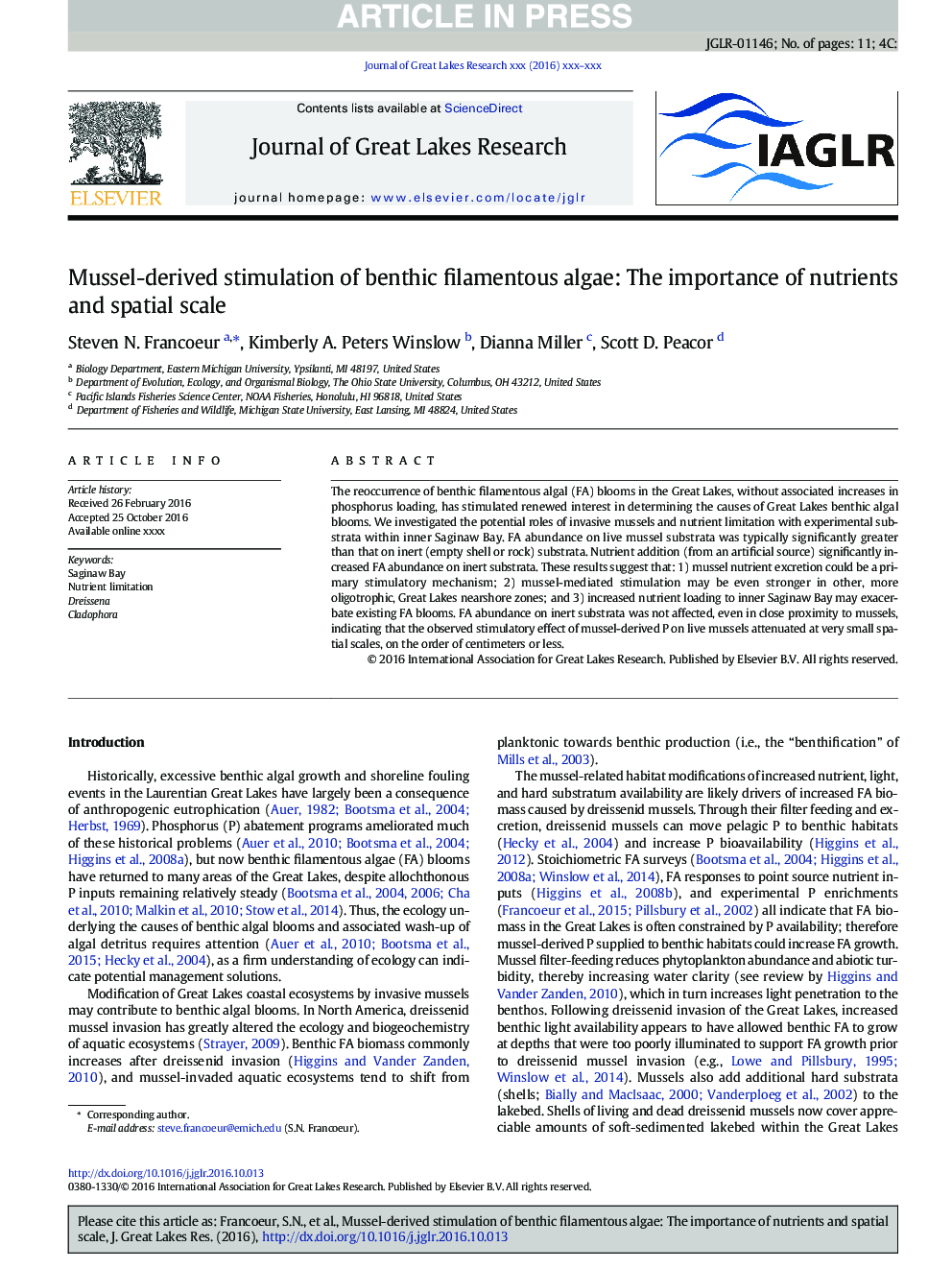| Article ID | Journal | Published Year | Pages | File Type |
|---|---|---|---|---|
| 5744771 | Journal of Great Lakes Research | 2017 | 11 Pages |
Abstract
The reoccurrence of benthic filamentous algal (FA) blooms in the Great Lakes, without associated increases in phosphorus loading, has stimulated renewed interest in determining the causes of Great Lakes benthic algal blooms. We investigated the potential roles of invasive mussels and nutrient limitation with experimental substrata within inner Saginaw Bay. FA abundance on live mussel substrata was typically significantly greater than that on inert (empty shell or rock) substrata. Nutrient addition (from an artificial source) significantly increased FA abundance on inert substrata. These results suggest that: 1) mussel nutrient excretion could be a primary stimulatory mechanism; 2) mussel-mediated stimulation may be even stronger in other, more oligotrophic, Great Lakes nearshore zones; and 3) increased nutrient loading to inner Saginaw Bay may exacerbate existing FA blooms. FA abundance on inert substrata was not affected, even in close proximity to mussels, indicating that the observed stimulatory effect of mussel-derived P on live mussels attenuated at very small spatial scales, on the order of centimeters or less.
Related Topics
Physical Sciences and Engineering
Earth and Planetary Sciences
Earth and Planetary Sciences (General)
Authors
Steven N. Francoeur, Kimberly A. Peters Winslow, Dianna Miller, Scott D. Peacor,
